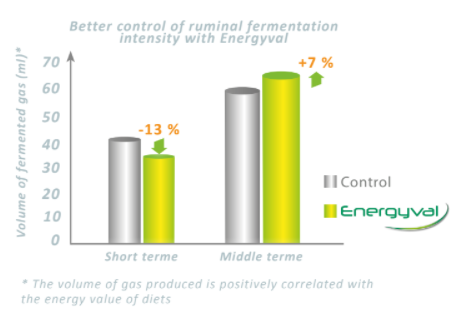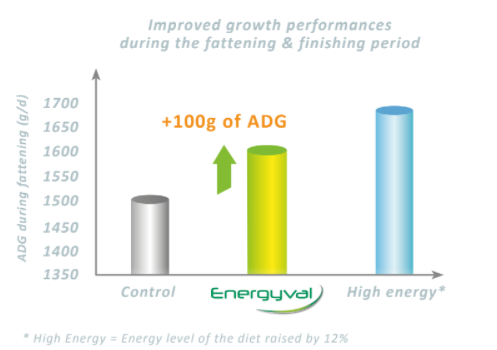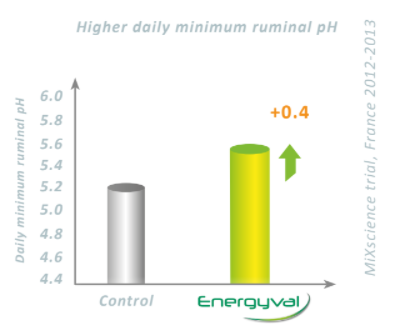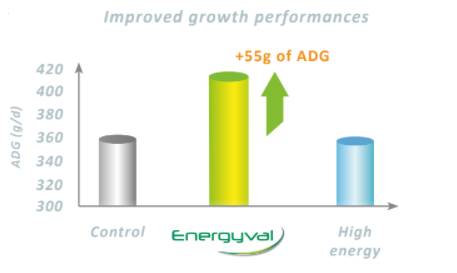Enhanced TDS
Knowde-enriched technical product data sheet
Identification & Functionality
- Animal Feed & Nutrition Functions
- Technologies
- Product Families
Features & Benefits
- Animal Feed & Nutrition Features
- Context

- The Volatile Fatty Acids (VFA) are the main source of energy (60 to 80%) in ruminants
- A stable rumen environment is required to ensure good fermentations
Control of carbohydrates degradability of diets while maintaining adequate digestive comfort is necessary to ensure performances of animals
- Features & Benefits
- Energyval improves the overall feed efficiency
- Energyval improves growth performances and ensures digestive comfort
- Energyval improves technical and economic performances of the group
Top Feeding
- Add Energyval in the diet or in the concentrate and get higher performances
Optimisation
- Lower concentrate cost for equal milk performances
- Strategy
A specific blend of essential oils, mineral salts and spices working in synergy
- Control of VFAs production kinetics
- Orientation and stimulation of ruminal microflora
- Limitation of metabolic digestive disorders
- Mode of Action
Actions
- Increased production of natural buffer (bicarbonate) by stimulation of animal salivation
- Increased microbial synthesis and orientation of the flora
- Benefits
- Digestive comfort
- Better use of ingested nutrients (improvement of ADG)
- Energy efficiency
- Control of carbohydrates degradation in the rumen
- Control of VFA production
Applications & Uses
- Markets
- Applications
- Animal Species
- Directions for Use
- Dairy cows: 15g / animal/day (10 à 30g)
- Beef cattle: 2g / 100kg of Body Weight
- Goats, Lambs & Ewes: 2.5g / animal / day
Technical Details & Test Data
- Experimental Results
Protocol
- In vitro trial on rumen fluid of cows, with a ration substrate
- 4 weeks trial

Short term effect
- Slower fermentations of raw materials in the rumen
- Improves digestive safety
Middle term effect
- Higher ruminal fermentations
- Experimental Results
Protocol
- Trial on fattening bulls (3 groups)
- Trial on the whole fattening & finishing period (10 months), weighed every month
- Use of a ruminal pH sensor (bolus)


- Experimental Results
Protocol
- Trial on 3 batches of 20 lambs (meat breed)
- Trial on 2 months, with weighing every 15 days and daily monitoring of consumption

* High Energy = Energy level of the feed raised by 12%
